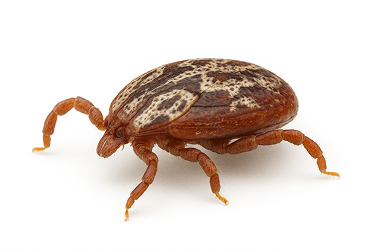Ticks
Ticks are parasitic arachnids that spread dangerous diseases like Lyme disease and Rocky Mountain spotted fever. Found in grassy and wooded areas, they latch onto hosts to feed on blood, often going unnoticed. Their bites can cause infections, allergic reactions, and serious health complications. This guide provides essential steps to identify, prevent, and remove ticks to protect your health.

Here are some of the most common tick species found across households in the United States.
-
American Dog Tick

-
Brown Dog Tick

-
Deer Tick

-
Lone Star Tick

-
Wood Tick


Antennae: None; instead, they have specialized mouthparts for piercing skin and feeding on blood.
Size: Typically 1–5 mm when unfed; engorged ticks can swell to over 10 mm.
Body Shape: Small, oval, and flattened when unfed; becomes larger and more rounded after feeding.
Color: Varies by species; common colors include brown, reddish-brown, black, or grayish when engorged.
Legs: Eight legs (as adults), with larvae having six; legs may have distinct coloring or bands.
You can use the following model to help you identify an american dog tick .











































































































